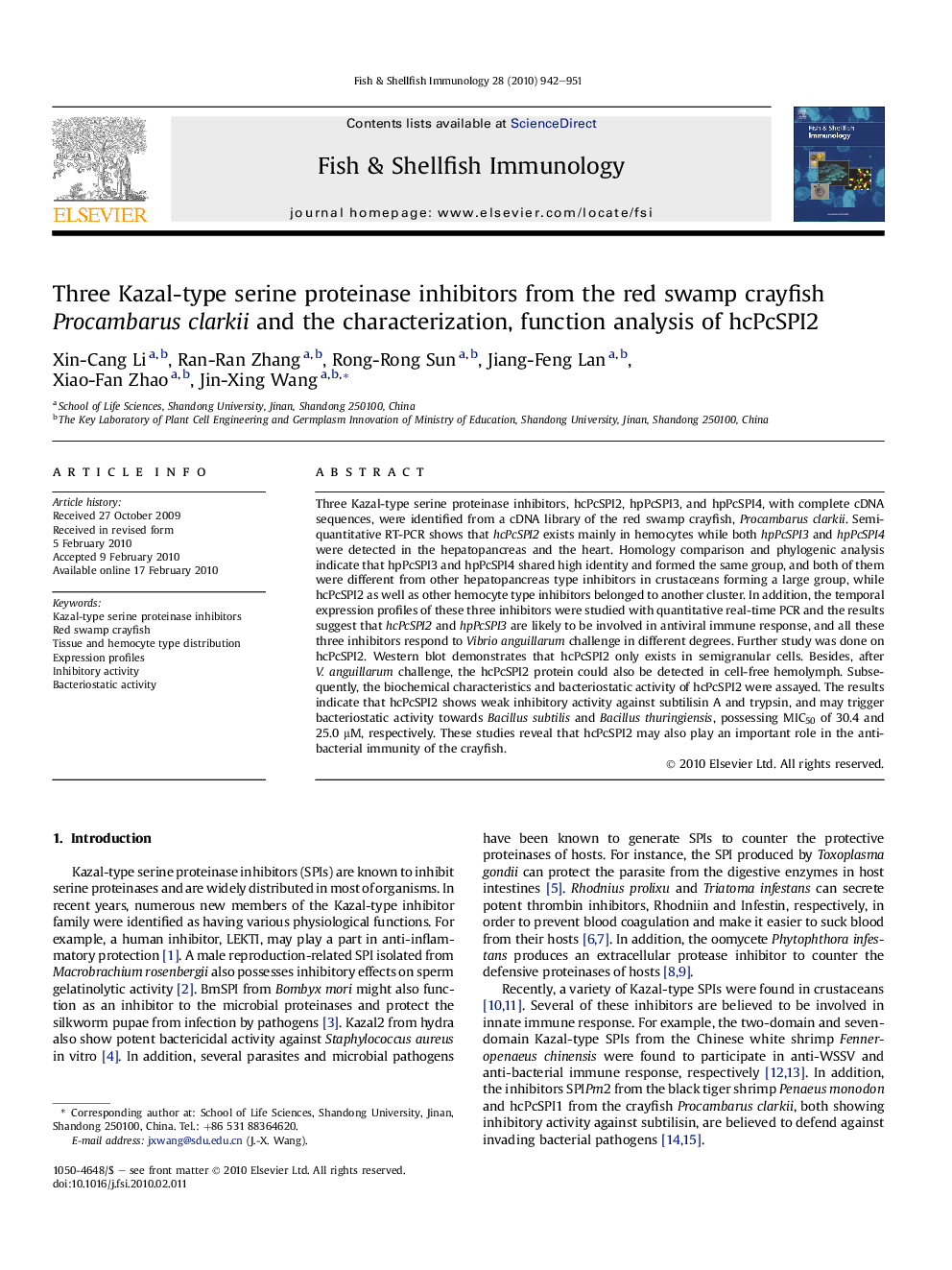| Article ID | Journal | Published Year | Pages | File Type |
|---|---|---|---|---|
| 2432690 | Fish & Shellfish Immunology | 2010 | 10 Pages |
Three Kazal-type serine proteinase inhibitors, hcPcSPI2, hpPcSPI3, and hpPcSPI4, with complete cDNA sequences, were identified from a cDNA library of the red swamp crayfish, Procambarus clarkii. Semi-quantitative RT-PCR shows that hcPcSPI2 exists mainly in hemocytes while both hpPcSPI3 and hpPcSPI4 were detected in the hepatopancreas and the heart. Homology comparison and phylogenic analysis indicate that hpPcSPI3 and hpPcSPI4 shared high identity and formed the same group, and both of them were different from other hepatopancreas type inhibitors in crustaceans forming a large group, while hcPcSPI2 as well as other hemocyte type inhibitors belonged to another cluster. In addition, the temporal expression profiles of these three inhibitors were studied with quantitative real-time PCR and the results suggest that hcPcSPI2 and hpPcSPI3 are likely to be involved in antiviral immune response, and all these three inhibitors respond to Vibrio anguillarum challenge in different degrees. Further study was done on hcPcSPI2. Western blot demonstrates that hcPcSPI2 only exists in semigranular cells. Besides, after V. anguillarum challenge, the hcPcSPI2 protein could also be detected in cell-free hemolymph. Subsequently, the biochemical characteristics and bacteriostatic activity of hcPcSPI2 were assayed. The results indicate that hcPcSPI2 shows weak inhibitory activity against subtilisin A and trypsin, and may trigger bacteriostatic activity towards Bacillus subtilis and Bacillus thuringiensis, possessing MIC50 of 30.4 and 25.0 μM, respectively. These studies reveal that hcPcSPI2 may also play an important role in the anti-bacterial immunity of the crayfish.
